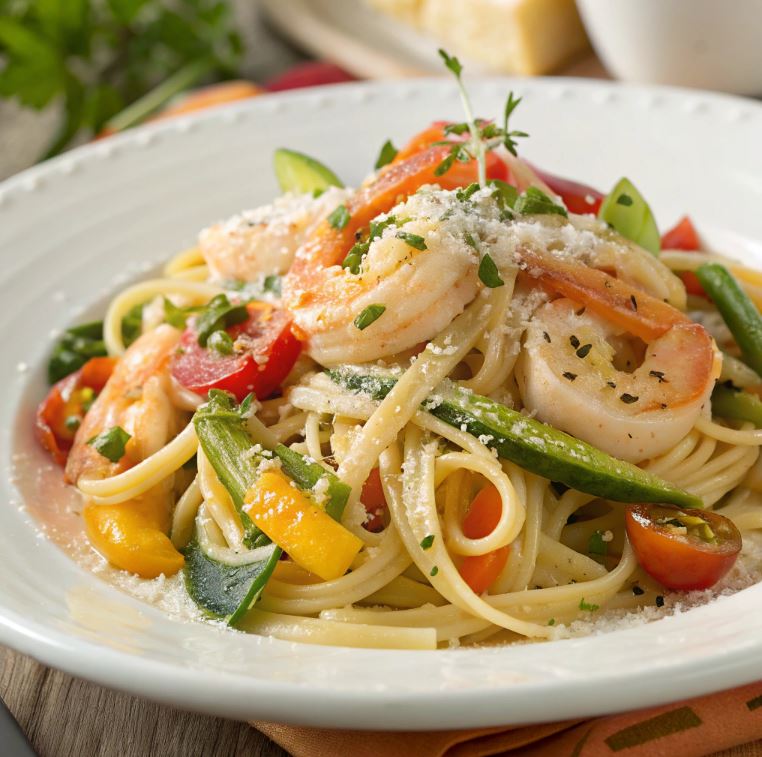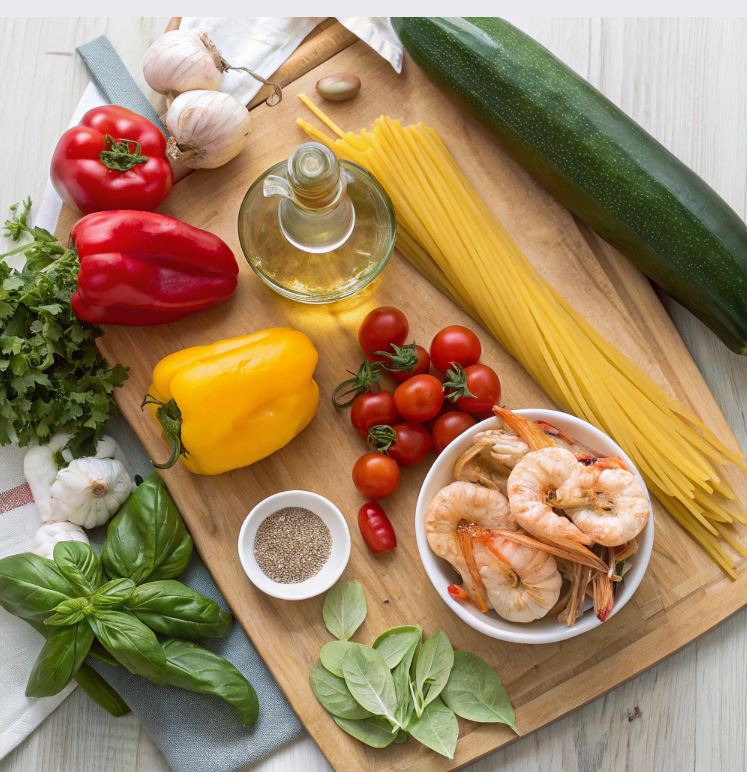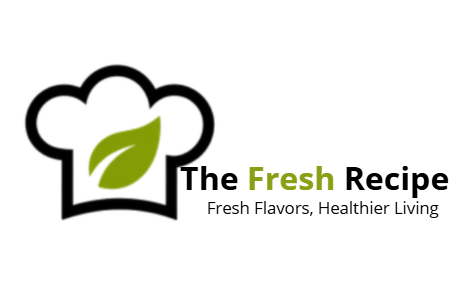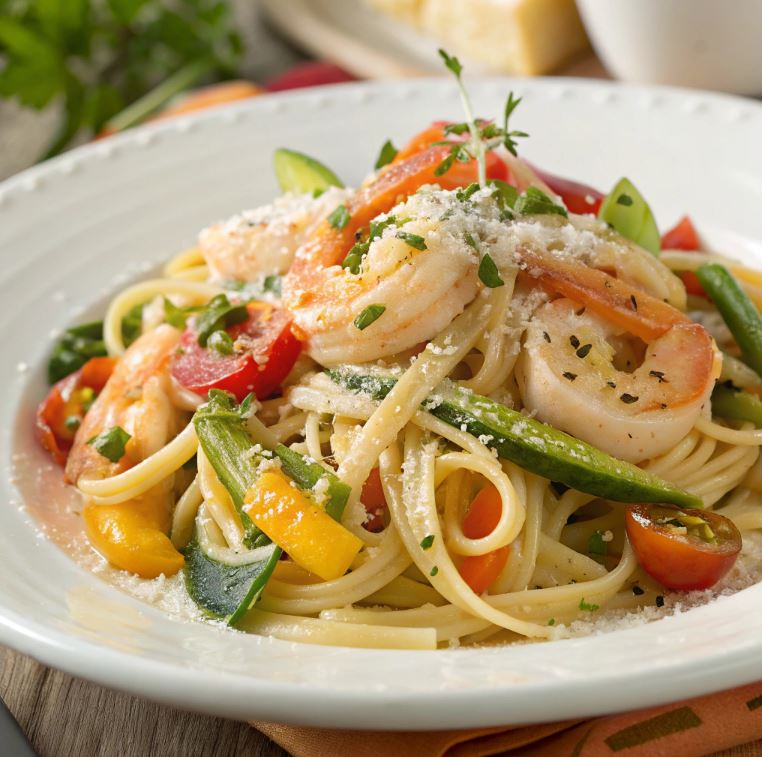Shrimp pasta primavera is a light yet satisfying dish that combines tender shrimp, vibrant vegetables, and perfectly cooked pasta in a flavorful sauce. Known for its fresh ingredients and balanced taste, this dish is an excellent choice for a nutritious and delicious meal.

Many appreciate shrimp pasta primavera for its versatility. It allows for ingredient modifications, making it suitable for different dietary preferences. The combination of shrimp and colorful vegetables provides a healthy mix of lean protein, fiber, and essential nutrients. Whether made for a quick weeknight dinner or served at a gathering, this dish impresses with its simplicity and bright flavors.
The origins of shrimp pasta primavera trace back to Italian and American influences, blending classic pasta techniques with seasonal vegetables. In this article, we’ll explore its history, global adaptations, essential ingredients, and expert cooking tips to achieve the perfect dish every time.
History and Origins of Shrimp Pasta Primavera
The origins of shrimp pasta primavera can be traced to Italian-American cuisine, where fresh vegetables and seafood are often paired with pasta. The term primavera, which means “spring” in Italian, reflects the dish’s emphasis on seasonal ingredients.
While pasta dishes have existed for centuries, the specific concept of pasta primavera emerged in the 1970s. This dish gained popularity when it was introduced at a famous New York restaurant, Le Cirque, where chefs experimented with fresh vegetables, olive oil, and light sauces to create a refreshing alternative to heavy, cream-based pastas.
The inclusion of shrimp in shrimp pasta primavera enhances the dish by adding lean protein and a subtle seafood flavor that pairs well with fresh vegetables. Over time, this recipe has evolved, incorporating different regional flavors and preparation techniques. Today, it is widely enjoyed for its bright colors, balanced nutrition, and easy preparation.
Shrimp Pasta Primavera All Over the World
While shrimp pasta primavera has roots in Italian-American cuisine, variations of this dish can be found worldwide. Different cultures incorporate their own ingredients and spices, creating unique interpretations while maintaining the essence of fresh vegetables and shrimp combined with pasta.
- Italy: Traditional Italian versions focus on fresh, seasonal vegetables, olive oil, and a light garlic-based sauce. The emphasis is on simplicity and natural flavors.
- United States: Many American adaptations of shrimp pasta primavera include creamy sauces, parmesan cheese, and additional seasonings to enhance richness.
- France: Some French variations use white wine and fresh herbs like tarragon and thyme to add depth to the sauce.
- Asia: In Asian-inspired versions, soy sauce, ginger, and chili flakes are added for a bold, umami-packed taste.
- Mediterranean Regions: Countries like Greece and Spain may incorporate olives, sun-dried tomatoes, or feta cheese for a tangy twist.
Despite regional differences, this shrimp pasta maintains its reputation as a light and flavorful dish that celebrates fresh ingredients.
Detailed Ingredients for Shrimp Pasta Primavera
To prepare the perfect shrimp pasta primavera, selecting high-quality, fresh ingredients is essential. Each component plays a key role in creating the dish’s signature balance of flavors and textures.

Essential Ingredients:
- Shrimp: Choose large, deveined shrimp for a tender and juicy protein source. Fresh or frozen shrimp both work well.
- Pasta: Fettuccine, penne, or spaghetti hold the sauce and vegetables effectively. Whole wheat or gluten-free options can be used for dietary adjustments.
- Vegetables: Common choices include bell peppers, zucchini, cherry tomatoes, asparagus, and carrots. The variety of colors adds visual appeal and nutrition.
- Olive Oil: High-quality extra virgin olive oil enhances the flavor while keeping the dish light.
- Garlic: Freshly minced garlic adds depth and aroma.
- Lemon Juice: Provides a bright acidity that balances the richness of the olive oil and shrimp.
- Parmesan Cheese: Aged parmesan brings a nutty, salty flavor to the dish. For dairy-free options, nutritional yeast can be a substitute.
- Herbs and Seasonings: Fresh basil, parsley, salt, black pepper, and red pepper flakes add the final touch.
By using these simple, fresh ingredients, this recipe maintains its light and refreshing profile.
Step-by-Step Instructions
Preparing shrimp pasta primavera is straightforward, making it a great choice for home cooks of all skill levels. Following these steps ensures a perfectly cooked dish with balanced flavors.
- Cook the Pasta: Bring a large pot of salted water to a boil and cook pasta according to package instructions. Reserve a cup of pasta water before draining.
- Prepare the Shrimp: In a large skillet, heat olive oil over medium heat. Add the shrimp, season with salt and pepper, and cook until pink and opaque, about 2-3 minutes per side. Remove and set aside.
- Sauté the Vegetables: In the same pan, add more olive oil if needed and sauté garlic until fragrant. Add the chopped vegetables and cook until tender but still crisp.
- Combine the Ingredients: Return the shrimp to the skillet and toss everything together. Add the cooked pasta, lemon juice, and reserved pasta water to create a light sauce.
- Season and Serve: Stir in fresh herbs, parmesan cheese, and red pepper flakes if desired. Serve immediately.
Following these steps guarantees a flavorful and satisfying shrimp pasta primavera.
Tips for Perfect Shrimp Pasta Primavera
Achieving the best shrimp pasta primavera requires attention to detail. These expert tips help enhance the texture and flavor of the dish.
- Use Fresh Ingredients: Fresh shrimp and seasonal vegetables bring out the best flavors.
- Cook Pasta Al Dente: Overcooked pasta becomes mushy and absorbs too much liquid.
- Do Not Overcook the Shrimp: Shrimp cooks quickly, so remove them from heat as soon as they turn pink.
- Balance the Sauce: Using reserved pasta water helps create a light, well-balanced sauce.
- Add Herbs at the End: Fresh basil and parsley should be added just before serving to preserve their aroma.
By following these guidelines, this recipe will always turn out perfectly.
Health Benefits of Shrimp Pasta Primavera
Beyond its delicious taste, shrimp pasta primavera provides several health benefits due to its fresh and nutritious ingredients.
- Lean Protein: Shrimp is a low-calorie, high-protein seafood option that supports muscle health.
- Rich in Antioxidants: The variety of vegetables provides essential vitamins and antioxidants that boost immunity.
- Heart-Healthy Fats: Olive oil contains monounsaturated fats that promote cardiovascular health.
- Fiber-Rich Carbohydrates: Whole wheat pasta options can increase fiber intake, aiding digestion.
- Low in Saturated Fat: Compared to heavy cream-based pasta dishes, shrimp pasta primavera is a lighter alternative.
By choosing high-quality ingredients, this dish becomes both nutritious and satisfying.
Diet Information
Shrimp pasta primavera is a well-balanced dish that can be adapted to fit various dietary needs. With the right ingredient modifications, it can be made healthier without compromising its vibrant flavors.
- Low-Carb/Keto: Replace traditional pasta with spiralized zucchini (zoodles) or shirataki noodles for a lower-carb alternative.
- Gluten-Free: Use gluten-free pasta or rice noodles to make the dish suitable for those with gluten sensitivities.
- High-Protein: Shrimp already provides lean protein, but adding extra shrimp or chickpeas increases the protein content.
- Dairy-Free: Omit parmesan cheese or use nutritional yeast for a dairy-free alternative that still offers a cheesy flavor.
- Lower-Calorie Version: Use whole wheat pasta, reduce olive oil, and add extra vegetables to lower the calorie count while keeping the dish filling.
These adjustments make your shrimp pasta adaptable to different nutritional goals, ensuring it remains a healthy and flavorful option.
Making Shrimp Pasta Primavera Kid-Friendly
To make shrimp pasta primavera more appealing to kids, slight modifications can help adjust the texture and flavors while maintaining the dish’s nutritional value.
- Use Familiar Pasta Shapes: Rotini, penne, or bowtie pasta are easier for kids to eat and more visually appealing.
- Milden the Garlic Flavor: Reduce the amount of garlic or use garlic powder to create a milder taste.
- Finely Chop Vegetables: Small, bite-sized pieces make it easier for kids to eat without picking out individual vegetables.
- Add a Creamy Element: A light touch of cream or cheese sauce can make the dish more familiar to children who prefer creamier pasta.
- Avoid Spicy Additions: Skip red pepper flakes or strong herbs that might be too intense for young taste buds.
By making these small changes, shrimp pasta primavera becomes a kid-friendly dish that is both nutritious and enjoyable for the entire family.
Shrimp Pasta Primavera Serving Suggestions and Pairings
Pairing shrimp pasta primavera with the right sides and beverages enhances its overall taste and makes the meal feel more complete.
Best Side Dishes:
- Garlic Bread: Crispy, buttery garlic bread complements the pasta’s light sauce.
- Mixed Green Salad: A simple salad with a lemon vinaigrette adds a refreshing contrast.
- Roasted Vegetables: Asparagus, Brussels sprouts, or carrots add depth to the meal.
- Caprese Salad: Fresh tomatoes, basil, and mozzarella provide a bright, Mediterranean touch.
Pairing Suggestions:
- White Wine: A light Sauvignon Blanc or Pinot Grigio pairs well with shrimp and vegetables.
- Sparkling Water with Citrus: Lemon or lime-infused sparkling water complements the freshness of the dish.
- Iced Herbal Tea: A mild chamomile or green tea balances the flavors without overpowering the meal.
These pairings enhance the dining experience, making shrimp pasta primavera even more enjoyable.
Common Mistakes to Avoid
To achieve the perfect shrimp pasta primavera, it’s important to avoid common cooking errors that can affect taste and texture.
- Overcooking the Shrimp: Shrimp cooks quickly, and overcooking makes it tough and rubbery. Remove it from heat as soon as it turns pink.
- Overloading with Vegetables: While vegetables add nutrition, too many can make the dish watery or overpower the pasta.
- Skipping the Pasta Water: Reserved pasta water helps create a light sauce that coats the pasta evenly.
- Overcooking the Pasta: Pasta should be cooked al dente to maintain a firm texture and prevent sogginess.
- Not Seasoning Properly: Under-seasoned shrimp or vegetables can make the dish taste bland. Use salt, pepper, and fresh herbs to enhance the flavors.
Avoiding these mistakes ensures that shrimp pasta primavera turns out delicious every time.
Shrimp Pasta Primavera Variations
There are many ways to customize shrimp pasta primavera while keeping its fresh and vibrant taste. Here are some delicious variations:
- Creamy Version: Add a splash of heavy cream or cream cheese for a richer texture.
- Spicy Kick: Mix in red pepper flakes or a dash of Cajun seasoning for extra heat.
- Mediterranean Style: Include Kalamata olives, feta cheese, and sun-dried tomatoes for a Mediterranean twist.
- Asian-Inspired: Toss with soy sauce, sesame oil, and ginger for an umami-rich variation.
- Pesto Primavera: Stir in homemade or store-bought basil pesto to add a fresh herbaceous flavor.
- Vegan Alternative: Replace shrimp with grilled tofu or chickpeas and use dairy-free parmesan for a plant-based version.
These variations allow for flexibility in ingredients while maintaining the essence of shrimp pasta primavera.
Storage and Reheating Tips
Proper storage and reheating techniques help maintain the quality of shrimp pasta primavera, ensuring it stays fresh for later meals.
Storage Tips:
- Refrigeration: Store leftovers in an airtight container for up to 3 days.
- Freezing: While pasta can be frozen, shrimp tends to become rubbery. If freezing, remove shrimp before storing and add fresh shrimp when reheating.
- Portioning: Divide into smaller servings before storing to make reheating easier.
Reheating Methods:
- Stovetop: Warm over low heat with a splash of olive oil or reserved pasta water to restore moisture.
- Microwave: Heat in short intervals, stirring between each to ensure even heating.
- Oven: Reheat covered at 325°F for about 10-15 minutes to avoid drying out.
By following these storage and reheating tips, shrimp pasta primavera retains its freshness and flavor.
FAQ: What People Ask About Shrimp Pasta Primavera
1. Can I make shrimp pasta primavera ahead of time?
Yes, but for best results, cook the pasta and vegetables separately and combine just before serving to maintain texture.
2. What’s the best pasta shape for shrimp pasta primavera?
Penne, fettuccine, and spaghetti work well, but any pasta that holds sauce can be used.
3. Can I use frozen shrimp?
Yes, just thaw completely and pat dry before cooking to prevent excess moisture.
4. How do I prevent the sauce from being too watery?
Avoid overloading vegetables, and let them cook until moisture reduces before adding pasta.
5. Can I add a creamy sauce?
Yes! A splash of cream, mascarpone, or a light Alfredo sauce can be incorporated for a richer dish.
6. What vegetables work best?
Bell peppers, zucchini, asparagus, cherry tomatoes, and carrots complement the dish well.
Conclusion
Shrimp pasta primavera is a fresh and flavorful dish that combines protein-rich shrimp, vibrant vegetables, and perfectly cooked pasta. Its versatility allows for customization while maintaining its signature taste.
By following expert preparation tips, avoiding common mistakes, and experimenting with variations, home cooks can master the art of making shrimp pasta primavera. Whether served as a light summer dish or a hearty dinner, this recipe remains a popular favorite for its simplicity and balanced flavors.
With the right ingredients and techniques, shrimp pasta primavera can be a go-to meal that satisfies both taste and nutrition, making it a perfect addition to any home-cooked menu.

